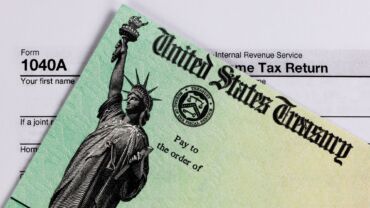Issue Snapshot: Hardship Distributions From 401(k) Plans (June 23, 2021)
Available at https://www.irs.gov/retirement-plans/issue-snapshot-hardship-distributions-from-401k-plans
The IRS has updated its “Issue Snapshot” summarizing the requirements for hardship distributions from 401(k) plans. Issue Snapshots are documents created for use by IRS employees that analyze tax issues and provide links to additional resources, including Code sections and regulations, revenue rulings, and IRS webpages. Issue snapshots are not intended as a comprehensive discussion of all issues on a covered topic, and they do not limit the IRS’s ability to use other approaches in examinations. These latest updates to the snapshot on hardship distributions incorporate changes made by the Bipartisan Budget Act of 2018 (see our Checkpoint article), which expanded the sources of funds for hardship distributions, removed the requirement for participants to exhaust available plan loans, and directed the IRS to delete the safe harbor requirement that elective deferrals and employee contributions be suspended after a hardship distribution. The snapshot also reflects amendments to the hardship regulations that implemented the legislative changes and created a single standard for determining whether a distribution is necessary to satisfy a participant’s need (see our Checkpoint article).
The updated issue snapshot drops virtually all discussion of the restrictions that applied to hardship distributions prior to 2020—i.e., before the effective date of the amended regulations—and focuses on the current rules. It explains the expansion of hardship distributions to include earnings, QNECs and QMACs; clarifies that anticipated and voluntary expenses may qualify as hardship needs; and reflects the expansion of qualifying needs to include hardships relating to medical, education, and funeral expenses for primary beneficiaries of the participant. The snapshot also summarizes the current minimum requirements for determining that a distribution is necessary. The listed audit tips no longer direct examiners to look for compliance with limitations based on source of funds (because those limitations have ended), and they no longer instruct examiners to look at returned hardship distribution checks. But the audit tips do stress that a distribution’s necessity must be represented in writing (paper or electronic) by the employee, and advise examiners to verify that participants actually did take all other available distributions.
EBIA Comment: Plans that permit hardship distributions should already have implemented the legislative and regulatory changes reflected in this revised issue snapshot—including the elimination of elective deferral suspensions following hardship distributions. But some plans may not yet have gotten around to incorporating the changes (as necessary) into their plan documents. Because changes to the hardship regulations were included on the 2019 Required Amendments List (see our Checkpoint article), amendments of private-sector employers’ individually designed plans to incorporate the changes will have to be adopted by December 31, 2021—the end of the second calendar year beginning after the year in which the Required Amendments List was issued. For more information, see EBIA’s 401(k) Plans manual at Sections XV.B (“Safe Harbor Events Deemed to Be Financial Hardships”), XV.E (“General Standard for Determining Lack of Other Resources”), and XXVII.G.1 (“Extended Remedial Amendment Periods for Individually Designed Plans”).
Contributing Editors: EBIA Staff.








